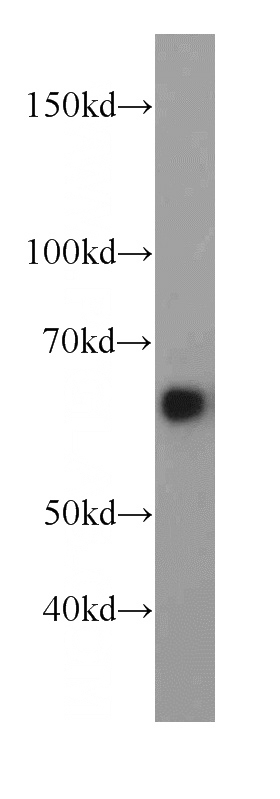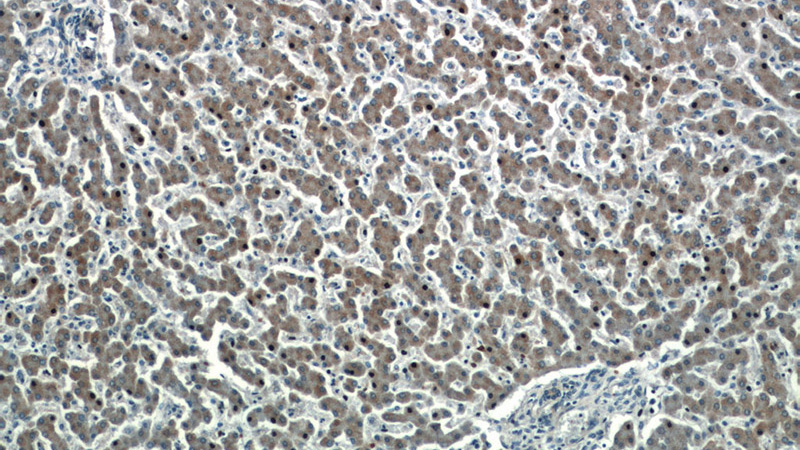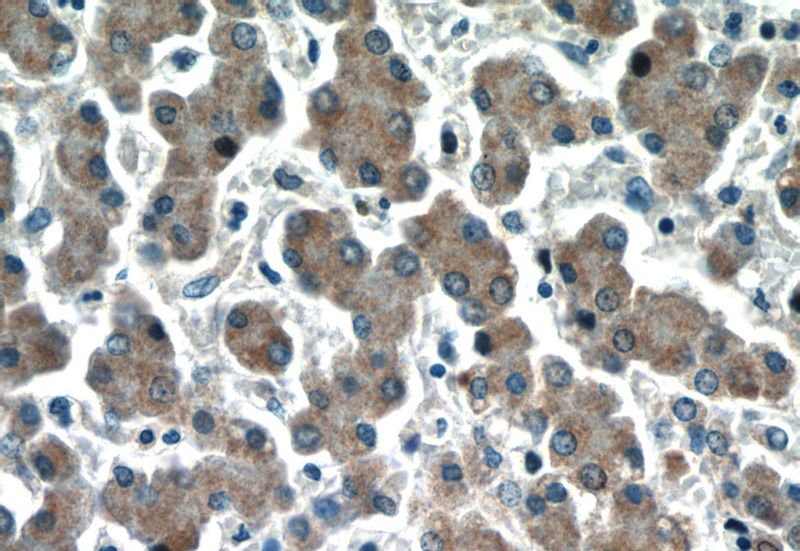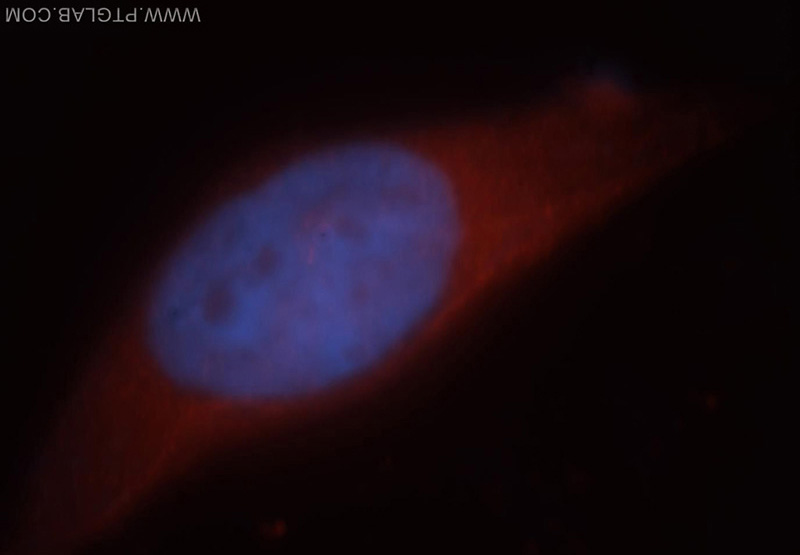-
Product Name
HEPACAM antibody
- Documents
-
Description
HEPACAM Rabbit Polyclonal antibody. Positive WB detected in mouse brain tissue, HepG2 cells, MCF7 cells, rat brain tissue, SH-SY5Y cells. Positive IP detected in rat brain tissue. Positive IF detected in MCF-7 cells. Positive IHC detected in human liver tissue. Observed molecular weight by Western-blot: 46-72 kDa
-
Tested applications
ELISA, IF, IHC, WB, IP
-
Species reactivity
Human,Mouse,Rat; other species not tested.
-
Alternative names
FLJ25530 antibody; GlialCAM antibody; HEPACAM antibody; Protein hepaCAM antibody
-
Isotype
Rabbit IgG
-
Preparation
This antibody was obtained by immunization of HEPACAM recombinant protein (Accession Number: NM_152722). Purification method: Antigen affinity purified.
-
Clonality
Polyclonal
-
Formulation
PBS with 0.02% sodium azide and 50% glycerol pH 7.3.
-
Storage instructions
Store at -20℃. DO NOT ALIQUOT
-
Applications
Recommended Dilution:
WB: 1:200-1:2000
IP: 1:200-1:2000
IHC: 1:20-1:200
IF: 1:10-1:100
-
Validations

mouse brain tissue were subjected to SDS PAGE followed by western blot with Catalog No:111291(HEPACAM antibody) at dilution of 1:500

Immunohistochemistry of paraffin-embedded human liver tissue slide using Catalog No:111291(HEPACAM Antibody) at dilution of 1:50 (under 10x lens)

Immunohistochemistry of paraffin-embedded human liver tissue slide using Catalog No:111291(HEPACAM Antibody) at dilution of 1:50 (under 40x lens)

mmunofluorescent analysis of MCF-7 cells, using HEPACAM antibody Catalog No:111291 at 1:25 dilution and Rhodamine-labeled goat anti-rabbit IgG (red).Blue pseudocolor = DAPI (fluorescent DNA dye).

IP Result of anti-HEPACAM (IP:Catalog No:111291, 4ug; Detection:Catalog No:111291 1:500) with rat brain tissue lysate 4000ug.
-
Background
HepaCAM (hepatocyte cell adhesion molecule), also known as GlialCAM, is a single-pass type I membrane glycoprotein of 416 amino acids. It displays a typical structure of immunoglobulin (Ig)-like adhesion molecules including two extracellular Ig-like domains, a transmembrane segment, and a cytoplasmic tail. It has been shown that hepaCAM forms a cis-homodimer on the cell surface, and modulates cell-matrix interaction. It is predominantly expressed in the CNS glial cells. Defects in HEPACAM gene are the cause of megalencephalic leukoencephalopathy with subcortical cysts type 2A (MLC2A). HEPACAM has also been suggested as a tumor suppressor gene.
-
References
- Lanciotti A, Brignone MS, Molinari P. Megalencephalic leukoencephalopathy with subcortical cysts protein 1 functionally cooperates with the TRPV4 cation channel to activate the response of astrocytes to osmotic stress: dysregulation by pathological mutations. Human molecular genetics. 21(10):2166-80. 2012.
- Xu B, He Y, Wu X, Luo C, Liu A, Zhang J. Exploration of the correlations between interferon-γ in patient serum and HEPACAM in bladder transitional cell carcinoma, and the interferon-γ mechanism inhibiting BIU-87 proliferation. The Journal of urology. 188(4):1346-53. 2012.
- Tao J, Liu Q, Wu X. Identification of hypermethylation in hepatocyte cell adhesion molecule gene promoter region in bladder carcinoma. International journal of medical sciences. 10(13):1860-7. 2013.
- Tan B, Tan J, Du H. HepaCAM inhibits clear cell renal carcinoma 786-0 cell proliferation via blocking PKCε translocation from cytoplasm to plasma membrane. Molecular and cellular biochemistry. 391(1-2):95-102. 2014.
- Du HF, Ou LP, Lv CK. Expression of hepaCAM inhibits bladder cancer cell proliferation via a Wnt/β-catenin-dependent pathway in vitro and in vivo. Cancer biology & therapy. 16(10):1502-13. 2015.
- Wang X, Chen E, Tang M. The SMAD2/3 pathway is involved in hepaCAM-induced apoptosis by inhibiting the nuclear translocation of SMAD2/3 in bladder cancer cells. Tumour biology : the journal of the International Society for Oncodevelopmental Biology and Medicine. 2016.
Related Products / Services
Please note: All products are "FOR RESEARCH USE ONLY AND ARE NOT INTENDED FOR DIAGNOSTIC OR THERAPEUTIC USE"
